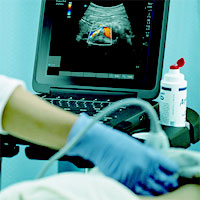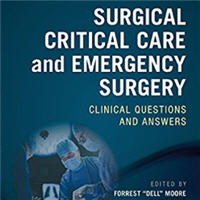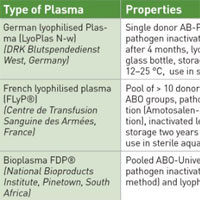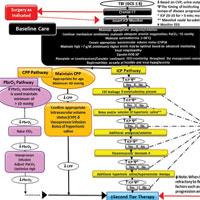Tag: trauma

Closed Chest Compressions in Traumatic Cardiac Arrest
This study demonstrated that fluid resuscitation with whole blood is significantly better than resuscitation with compressions alone or with normal saline. It further showed that there was no difference between whole blood... read more

Reversal of Oral Anticoagulation in Patients with Acute Intracerebral Hemorrhage
In light of an aging population with increased cardiovascular comorbidity, the use of oral anticoagulation (OAC) is steadily expanding. A variety of pharmacological alternatives to vitamin K antagonists (VKA) have emerged... read more

Top 10 Perioperative Applications of Point-of-Care Ultrasound for Anesthesiologists
Anesthesiologists have been leaders in the use of point-of-care (POC) ultrasound for intraoperative transesophageal echocardiography (TEE), and to guide vascular access and regional anesthesia procedures. Recently, anesthesiologists... read more

Surgical Critical Care and Emergency Surgery: Clinical Questions and Answers
A unique question-and-answer book for surgical residents and trainees that covers all surgical aspects of critical care and acute or emergency medicine. This is a comprehensive, one-of-a-kind question-and-answer text for... read more

Is Pre-hospital Coagulation Management in Trauma Feasible?
Coagulation management remains a formidable challenge in severely bleeding trauma patients. A strong rationale suggests starting treatment of trauma-induced coagulopathy in the pre-hospital phase. The burden of trauma is... read more

Reducing Emergency Department Length of Stay
An interdisciplinary team of front-line physicians, nurses, medical assistants, and executives assembled and used value stream mapping to assess the entire ED care process, from patient arrival to admission or discharge.... read more

Teaching the Principles of Pediatric Critical Care to Non-Intensivists in Resource Limited Settings
It is a dismal reality of global health that the vast majority of critically ill or injured children are found in regions of the world least equipped to care for them. Most of these severely ill or injured children are cared... read more

The Effects of Family Functioning on the Development of Posttraumatic Stress in Children and Their Parents Following Admission to the PICU
Both children and parents have alarmingly high rates of acute stress and posttraumatic stress following the child's PICU admission. Although family function did not emerge as a predictor in this study, further understanding... read more

European Guideline on Managing Post-traumatic Bleeding: 5th Edition
An updated guideline on the management of significant bleeding and coagulopathy following major trauma has been released by the pan-European, multidisciplinary Task Force for Advanced Bleeding Care in Trauma. The document,... read more

Ketamine In Acute and Chronic Pain Management
The view of chronic pain as a symptom of a disease, rather than a disease state itself, has contributed to neglect in treating this condition. Although it is generally acknowledged that patients with chronic pain use significantly... read more

Safety of Early Tracheostomy in Trauma Patients After Anterior Cervical Fusion
Cervical spine injuries (CSIs) can have major effects on the respiratory system and carry a high incidence of pulmonary complications. Respiratory failure can be due to spinal cord injuries, concomitant facial fractures or... read more

Indications and Outcomes of Extracorporeal Life Support in Trauma Patients
Data from the largest registry of critically ill trauma patients receiving extracorporeal life support (ECLS) demonstrates reasonable survival. With growing experience and improved safety profile, trauma should not be considered... read more

Extravascular Lung Water as a Target for Intensive Care
Extravascular lung water (EVLW) remains a useful guide for monitoring pulmonary edema (PO) and vascular permeability in sepsis, acute respiratory distress syndrome (ARDS), and heart failure. In addition, EVLW has a prognostic... read more

Management of Pediatric Severe Traumatic Brain Injury
This article provides an algorithm of clinical practice for the bedside practitioner based on the available evidence, treatment protocols described in the articles included in the 2019 guidelines, and consensus that reflects... read more




